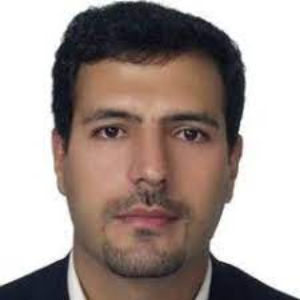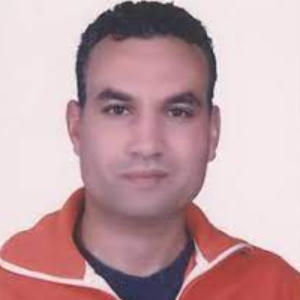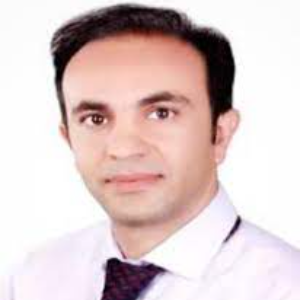Giorgio S Senesi, CNR - Istituto per la Scienza e Tecnologia dei Plasmi (ISTP), Italy
The comment by Winefordner et al. (2004) that Laser-Induced Breakdown Spectroscopy (LIBS) would be the next superstar in analytical atomic spectrometry appears prescient, as LIBS has been investigated and found very performant for elemental analysis in many different applications [....] » Read More

















Title : Visualizing the plumbing system of hunga tonga hunga haapai volcano, tonga.
Roman Alvarez, National Autonomous University of Mexico (UNAM), Mexico
The largest underwater volcano chain in the globe is generated by the Kermadec-Tonga Subduction Zone, with over 2000 km in length; additionally, the Tonga trench is one of the fastest subduction zones, with rates going up to 24 cm/yr. In January 15, 2022 a violent explosion occur [....] » Read More
Title : Carbon dioxide is by no means the cause of climate change, and solar radio radiation causes climate change. Forecast / Verification by Quantum Chemistry Molecular Modeling
Shozo Yanagida, Osaka University, Japan
Atmospheric components hydrated carbon dioxide [CO2 (H2O)2], hydrated Argon [Ar(H2O)2], hydrated triplet Oxygen [3O2(H2O)2], hydrated Nitrogen [N2(H2O)2], and water vapor [fs(H2O)3] was analyzed based on the density functional theory. All of the associated molecules give comparab [....] » Read More
Title : Energy Demand in Surface Soils for Earthquake Engineering based on Vertical Array Strong Motion Records
Takaji Kokusho, Chuo University, Japan
In earthquake engineering, acceleration has been playing a major role while wave energy has rarely been considered as a demand in design. In order to understand earthquake damage in terms of energy, the demand of wave energy in surface soils is studied here assuming one-dimension [....] » Read More
Title : Advancement of geotechnical engineering
Myint Win Bo, Toronto Metropolitan University , Canada
The history of geotechnical engineering is not very old and it was initiated by an understanding of soil mechanics in the early 19th century. The term “Geotechnology” which is now referred to as “geotechnical Engineering” first appeared in 1945. Howe [....] » Read More
Title : Soft ground improvement techniques: theoretical, laboratory and field based investigations.
Sudip Basack, Elitte College of Engineering, India
Reducing long-term settlement of infrastructure and providing cost-effective foundations with sufficient load-bearing capacities are national priorities for infrastructure development in most countries. In particular, transport infrastructure built on soft soil can cause excessiv [....] » Read More
Title : Potential rare earth resource estimation based on thorium exploration in the eastern coastal part of India using thermal imagery and instrumental neutron activation analysis.
Debashish Sengupta, Indian Institute of technology Kharagpur, India
The present study delves into the exploration of Heavy minerals in the coastal sands of Podampata area, using thermal imagery followed by ground trothing based on in-situ studies. The coast of Odisha is replete with placer deposits of beach origin. With the advent and evolution o [....] » Read More
Title : The Indian monsoon rainfall and associated climate drivers
Prijitha R G, Indian Institute of Technology Kharagpur, India
Indian rainfall is influenced by various climate drivers and climate forcings, and its frequency and occurrence is also affected by global warming. The changes in Indian rainfall affect the agriculture and livelihood of billions of people and hence the economy of India. Therefore [....] » Read More
Title : Minerals are the new oil
Simon Peter Michaux, Geological Survey of Finland, Finland
Energy is the master resource. It allows and facilitates all physical work done, the development of technology and allows human population to live in such high-density settlements like modern cities. The current industrial ecosystem is dependent on fossil fuels, with [....] » Read More
Title : Applied geophysics using gravity and electrical resistivity method to study deep and shallow structures related to aquifers system
Nesrine Frifita, University of Gabes, Tunisia
The aquifer system under the Jeffara plain, southeastern zone of Tunisia, was never studied by the geophysical approach, the present study provides a detailed geophysical analysis using gravity and 2D electrical resistivity tomography. The wavelength filtering produced the residu [....] » Read More
Title : Soft ground improvement techniques: theoretical, laboratory and field based investigations
Ghritartha Goswami, North Eastern Regional Institute of Science and Technology, India
Reducing long-term settlement of infrastructure and providing cost-effective foundations with sufficient load-bearing capacities are national priorities for infrastructure development in most countries. In particular, transport infrastructure built on soft soil can cause excessiv [....] » Read More
Title : Understanding daily/monthly scale variation in hydro-meteorological processes during Indian Summer Monsoon through observed and model water isotope data
Saikat Sengupta, Indian Institute of Tropical Meteorology, India
Stable isotopic ratio (2H/1H and 18O/16O) of atmospheric vapour and rain change during various hydro-meteorological processes viz, evaporation, advection, condensation, moisture recycling, etc. The relationships between isotope ratio and various local meteorological parameters ha [....] » Read More
Title : Detrital Zircon U-Pb Dating and Geochemistry of the Paleogene-Neogene sediments in the Qaidam Basin (China): Implications for Provenance and Tectonics
Yetong Wang, University of Chinese Academy of Sciences, China
Different sediment routing systems merge in the Qaidam Basin, providing an example of the interaction of several source areas with distinct petrographic signatures, recording several stages of exhumation of the surrounding orogenic belts. However, despite decades of studies deali [....] » Read More
Title : Global particle swarm optimization method for gravity data interpretation
Khalid S Essa, Cairo University, Egypt
Gravity data measured along a profile for a 2D fault-like geologic structure were interpreted to calculate the fault parameters (upthrown depth, downthrown depth, amplitude coefficient, fault angle, and location of the fault trace) applying the particle swarm method. Faults have [....] » Read More
Title : Increasing salinisation and pollution of groundwater resources in a tropical peninsula – causes and implications for human well-being
Ranjan Ramasamy, University of Jaffna, Sri Lanka
Sea level rise and unsustainable groundwater extraction causes sea water intrusion into fresh water aquifers in coastal zones. Extensive use of agrochemicals and poor waste drainage practices pollute groundwater. The impact of such changes on human well-being in the 1025 km2 Jaff [....] » Read More
Title : The deep-sea terrigenous and biogenic calcareous contourites as records of the Neogene-Quaternary bottom water circulation in the Western South Atlantic
Elena Ivanova, Shirshov Institute of Oceanology, Russian Academy of Sciences, Russian Federation
During the last ~ 30 - 40 years, it appeared clear that pelagic and lateral (gravity-driven) sedimentation in the oceans and seas is strongly supplemented by the sediment erosion, transport and accumulation due to the bottom currents activity, so-called contourite sedimentation. [....] » Read More
Title : The urban mining challenge in recovering value from secondary material in anthropogenic stocks
Lucia Helena Xavier, CETEM, Brazil
The scarcity of mineral resources and the prices fluctuation of demanded materials represent some of the aspects that most concern producers around the world. The pandemic and wars condition brought the need to guarantee the supply of raw materials. Internationally, the establish [....] » Read More
Title : Sustainability of groundwater resources in the Nile delta under the impact of climatic changes: challenges and future directions
Khaled Said Gemail, Zagazig University, Egypt
Sustainable development in the Nile Delta region, Egypt is retarded by serious environmental problems, where the land use and land cover of the region is changing over the present time. The groundwater quality in the Nile Delta area is controlled mainly by saltwater intrusion fro [....] » Read More
Title : Moho undulations and high Poisson’s ratio beneath volcanic areas, west of Saudi Arabia: indication of asymmetric lithospheric uplift
Ahmed Hosny, National Research Institute of Astronomy and Geophysisc (NRIAG), Egypt
By utilizing teleseismic data, the P-wave receiver functions (RFs) have been computed for 20 broadband seismic station deployed in Harrat Khaybar and Ithnayn, in the Arabian Shield area, western of Saudi Arabia. The RFs are modeled to investigate the crustal structure, represente [....] » Read More
Title : Using the monazite U-Th-Pb geochronology for dating the highly fractionated rare metal granites
Mabrouk Sami, Minia University, Egypt
Determining the absolute or relative age of the highly fractionated rare metal granites is one of the main challenges that face the petrochronologist, due to the significant effect of post-magmatic hydrothermal fluids during the evolution of these rocks. For example, most rare me [....] » Read More
Title : Evaluation of the potential and efficiency of geothermal system performance in closed mines
Dmytro Rudakov, Dnipro University of Technology, Ukraine
The study focuses on evaluating the potential of geothermal system in closed mines. The designs of existing open-loop and closed-loop geothermal systems in different countries, their thermal capacities and efficiency criteria are analyzed. The study encompasses preliminary assess [....] » Read More
Title : Monitoring of deformation, space observation, and socio-economic impacts due to the 2021 eruption of mount semeru by using geospatial analysis for multi aspects early warning system
Mokhamad Nur Cahyadi, Institut Teknologi Sepuluh Nopember (ITS), Indonesia
The high accuracy of positioning using the Global Navigation Satellite System (GNSS) has been widely used in geodynamics and deformation studies. To mitigate volcanic disasters, GNSS is not only limited to the role of measuring deformation of the area, GNSS also plays a role in m [....] » Read More
Title : Investigating the impact of clay minerals on the fluid flow of sandstone hydrocarbon reservoirs based on LBM simulation and SEM imaging
Naser Golsanami, Shandong University of Science and Technology, China
The presence of clays in hydrocarbon reservoirs challenges the producible amount of oil and gas significantly. Therefore, this study reports a detailed quantitative characterization of clays’ specific properties from two fundamental aspects which include clays’ type a [....] » Read More
Title : Recovery of nickel and cobalt from low-grade Ni-laterite ore of Sukinda, Odisha using microorganisms
Lala Behari Sukla, Siksha ‘O’ Anusandhan, India
Nickel principally occurs in two types of deposits i.e. sulfide and laterite ores. About 60% of nickel reserves are in the form of lateritic ores and 40% are in the form of sulfidic ores. However, the high-grade sulfidic ores have been the major source of nickel till date. Intere [....] » Read More
Title : Reactive contaminant transport modeling in a filled-fractured system with intervening rock matrices: Case examples of tritium and uranium
Abolfazl Rezaei, Institute for Advanced Studies in Basic Sciences (IASBS), Iran (Islamic Republic of)
While fractures are commonly filled in the subsurface, they have received little attention in terms of flow and solute transport. This study presents a semi-analytical solution for a reactive contaminant in a five-layer fracturematrix groundwater system characterized by a th [....] » Read More
Title : Assignation of groundwater vulnerability by GIS based DRASTIC method, a case study; determination of Diyarbakir’s Basalts aquifer pollution risk in Turkey
Recep Celik, Dicle University, Turkey
There are various causes for their being polluted aquifer over time, such as agricultural activities and the rapid growth of population, more industrial and domestic sewer water are discharged in shallow aquifers causing serious groundwater contamination. Therefore, in places whe [....] » Read More
Title : Automated mineral identification and its applications in rock mechanics
Saeed Aligholi, Federation University Australia, Australia
Microstructural features of a material are determining its mechanical properties. Mechanical properties of rock materials are very important in a wide range of engineering disciplines including mining, civil and petroleum. In order to reliably model mechanical properties of rock [....] » Read More
Title : Biogeochemistry of new potential toxic trace elements
Irina Shtangeeva, St. Petersburg state University, Russian Federation
Up to now, information about biogeochemistry of many trace elements is scarce. It is commonly accepted that only a small part of the so-called biologically essential elements are needed for normal plant development. Since the last century, another group of elements (they are call [....] » Read More